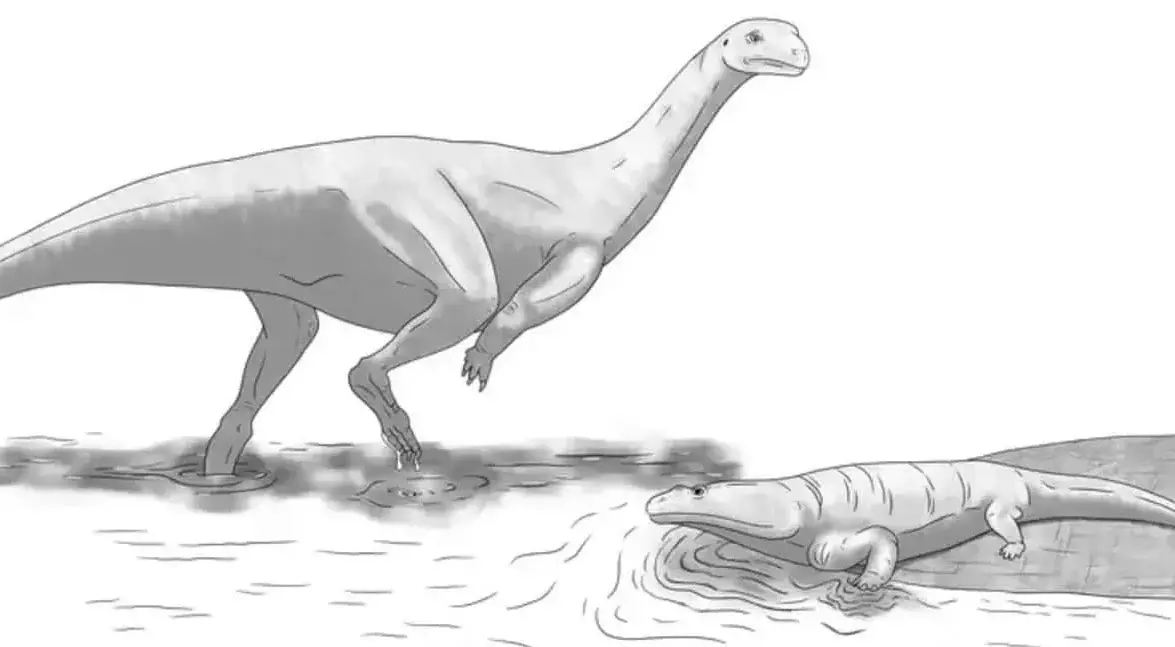Scientists found bones of a new dinosaur species
- May 31, 2024
- 0
Paleontologists have discovered parts of the hind leg of a new dinosaur belonging to sauropodomorphs and early masopods in northern Zimbabwe. The find at this site was a
Paleontologists have discovered parts of the hind leg of a new dinosaur belonging to sauropodomorphs and early masopods in northern Zimbabwe. The find at this site was a

Paleontologists have discovered parts of the hind leg of a new dinosaur belonging to sauropodomorphs and early masopods in northern Zimbabwe. The find at this site was a first in the last 50 years and demonstrates the potential of the region for further paleontological discoveries.
Dinosaur remains have been found on all continents, including Antarctica. True, in the Mesozoic there was no such clear division into continents as there is now. Gondwana had a supercontinent, and ancient predators were widely dispersed. But mostly dinosaur bones are found in Eurasia, South and North America. There are not many finds in Africa. One possible reason for this is that there are fewer paleontologists working in this part of the world.
For example, only three dinosaur species have previously been found in Zimbabwe, in 1969, 1972 and 2022. But recently a group of paleontologists from Great Britain, the United States, Europe and Zimbabwe reported that the remains of a new dinosaur species were found in the Middle Zambezi River basin (the river is divided into three regions). This is the first previously unknown lizard to appear in the northern part of Zimbabwe in 50 years. His statement was published in the magazine Acta Palaeontologica Polonica.
Sauropodomorphs from the Late Triassic or Early Jurassic period have been found most frequently in this region; this corresponds to a rocky age of 209.2 ± 4.5 million years for the geological formations in the Central Zambezi. The new species also turned out to be a sauropodomorph; his bones were found on Spurwing Island in the Kariba Reservoir, the world’s largest reservoir. Ancient animal named Musankwa sanyatiensis In honor of the houseboat that served scientists on two field trips and a laboratory (“musankwa” from the local dialect means son near marriage). The second part of its name comes from the Sanyati River, which flows into the Zambezi near the Kariba Dam.

In March 2018, paleontologists uncovered the new lizard’s incomplete right hind leg. Since the material was on the surface, it was severely cracked and some pieces had crumbled even before laboratory analysis. The find consists of femur, tibia and heel bones, as well as unidentified parts. Based on the structure of the remains and using the formula for determining the mass, scientists determined that the weight was: M. sanyatiensis It can reach 386 kilograms. It is a bipedal hunter with large legs and a massive body.
Based on numerous features of the building and changes in the hind limb, the researchers attributed the finding to a new species. Other from Late Triassic massopoda (this is a class of sauropodomorphs) M. sanyatiensis curved parts of the femur are distinguished by the ratio of leg and thigh lengths, bone processes, notches and other features. Phenological analysis made it possible to attribute the new species to an early representative massopoda.
As the authors of the scientific article note, this finding highlights the paleontological potential of the region along the Kariba reservoir; New discoveries are possible here in the future. But excavations here are complicated by annual fluctuations in water levels. Also found was a dinosaur similar to riochasaurus (Riojasaurus) and euknemosaurs (Eucnemesaurus), according to scientists, may constitute a separate treasury of Gondwana taxa. However, there is not enough actual data to test this hypothesis.
Source: Port Altele
As an experienced journalist and author, Mary has been reporting on the latest news and trends for over 5 years. With a passion for uncovering the stories behind the headlines, Mary has earned a reputation as a trusted voice in the world of journalism. Her writing style is insightful, engaging and thought-provoking, as she takes a deep dive into the most pressing issues of our time.